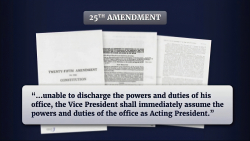The UK fighter jet stranded in India for over a month due to a hydraulic failure has rejoined HMS Prince of Wales after repairs, raising concerns about British defense readiness.
The Royal Navy’s F-35B, which was “stranded” in India for more than a month, was repaired and departed Thiruvananthapuram International Airport on Tuesday. However, initial reports that the aircraft was returning to the UK were incorrect.
On Friday, the fifth-generation stealth fighter (tail number ZM168, aircraft number BK-034) returned to the Royal Navy’s flagship aircraft carrier, HMS Prince of Wales.
What Was the F-35 Stuck in India?
The F-35B, the short takeoff vertical landing (STOVL) variant of the Joint Strike Fighter, was embarked on HMS Prince of Wales, which is currently engaged in Operation Highmast, a deployment to the Indo-Pacific. On June 14, 2025, the carrier and its strike group (CSG 25) participated in joint operations with the Indian Air Force, when the Lightning (the UK’s designation for the fifth-generation fighter) was forced to divert to Thiruvananthapuram International Airport. The aircraft suffered a hydraulic issue and was grounded.
A team was first dispatched via a Merlin helicopter from the carrier to address the problem. Still, after they were unable to resolve the issue, it was determined that a larger engineering squad would need to be flown in from the UK and the United States, equipped with specialized tools. Around a dozen engineers and mechanics arrived in India on July 7.
For at least two weeks, the aircraft was kept in a remote parking spot at the airport before being relocated to a secure hangar where the repairs were completed on July 22.
“There was no particular urgency to return the jet to the carrier group,” the UK-based Navy Lookout reported, adding that the advanced fighter was “well guarded by British and Indian personnel.” However, the effort and time to address the issues “has not been a good look for UK defense.”
It is unclear when the decision was made to have the aircraft rejoin the carrier, but distance may have been one factor. India would be roughly halfway between the UK and northern Australia, where the airline arrived earlier this week. It is also likely that the UK’s Ministry of Defence (MoD) sought to demonstrate its capabilities in ensuring the aircraft could make the direct flight from Thiruvananthapuram to Darwin, Australia.
An RAF Voyager tanker provided in-flight refueling and accompanied the fighter during the recent flight.
The F-35 Breakdown in India Was a PR Disaster
The Royal United Service Institute think tank described the incident as “A PR disaster,” and warned that “such mishaps can be exploited by foreign states seeking to undermine public trust” in both the British military and its hardware.
The Kerala, India, tourist board shared a meme on social media that featured an image of the fighter plane with the caption “F-35B: Kerala is such a fantastic place, I don’t want to leave. Highly Recommend.”
In the social media era, every mishap and misstep can quickly go viral. Some of it is also carefully orchestrated. Such was the case earlier this month, when China launched a disinformation campaign targeting the Dassault Rafale, criticizing the French-made jet’s performance in the recent flare-up between India and Pakistan. Commentators on social media claimed multiple Indian Air Force Rafales were shot down, while Chinese defense attachés allegedly sought to “hammer the reputation” of France’s flagship fighter aircraft.
Users on Chinese social media had also been highly critical of Russia’s Sukhoi Su-57 (NATO reporting name Felon) in advance of the 15th China International Aviation and Aerospace Exhibition last November.
The UK’s MoD may seek to avoid such criticism, and having the F-35B Lightning return to HMS Prince of Wales is a more favorable option than having the aircraft return to the UK.
When the F-35B, tail number ZM168, did return to the Royal Navy’s flagship, it might have found the flight deck with a few additional aircraft. That is because Lightning IIs from the US Marine Fighter Attack Squadron 242 (VMFA-242), the “Bats,” had been carrying out operations with HMS Prince of Wales.
The US Navy and Royal Navy have been participating in the ongoing Talisman Sabre 2025 multinational exercises, during which two VMFA-242 F-35s conducted landings, refueling, and takeoffs.
US Marine Corps personnel have also embarked on the British carrier, joining the two UK squadrons, which include the Royal Air Force’s (RAF) 617 Squadron, known as the “Dambusters,” and Naval Air Squadron 809, also known as the “Immortals,” with a total complement of 18 fifth-generation STOVL fighters. It is unclear how long the USMC F-35Bs will operate from the UK’s warships.
VMFA-242 is currently embarked with the 31st Marine Expeditionary Unit (MEU), which consists of the amphibious assault ship USS America (LHA-6), the amphibious dock landing ship USS Rushmore (LSD-47), and the amphibious transport dock USS San Diego (LPD-22), USNI News reported.
About the Author: Peter Suciu
Peter Suciu has contributed over 3,200 published pieces to more than four dozen magazines and websites over a thirty-year career in journalism. He regularly writes about military hardware, firearms history, cybersecurity, politics, and international affairs. Peter is also a Contributing Writer for Forbes and Clearance Jobs. He is based in Michigan. You can follow him on Twitter: @PeterSuciu. You can email the author: [email protected].
Image Credit: Shutterstock/Kevin Shipp.


















